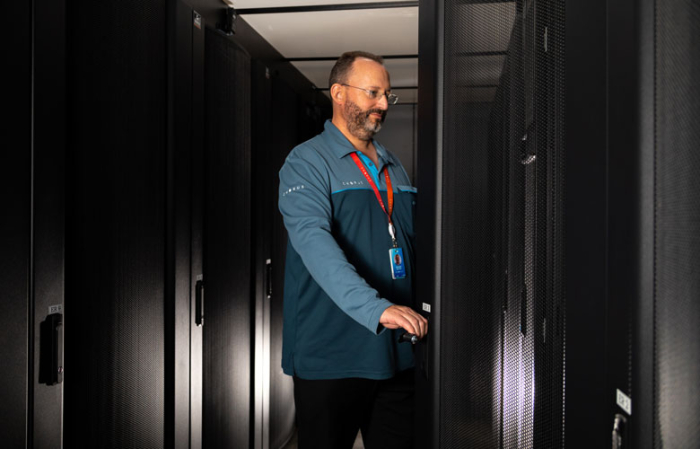Sponsored and supplied by Chorus
While power or network outages, cyber-attacks, accidents, and natural disasters don’t happen often, recent weather events in the North Island show they do happen.
And it doesn’t have to be a large-scale event like a cyclone to cause significant disruption, as smaller issues like a software update issue or hardware component failure can have an impact.
Depending on the scale of the disruption, by the time you consider impacts on productivity, reputation or customer experience, it can cost hundreds of thousands if not millions of dollars. According to ITIC’s 2021 Hourly Cost of Downtime Survey, 91% of organisations said a single hour of downtime that takes mission-critical server hardware and applications offline costs an average of over $300,000, due to lost business, productivity disruptions and remediation efforts.
Having data backups when things go wrong is standard practice now. They’ve taken on even more importance with the increased risk of cyberattacks, phishing, fraud and other threats as a result of the new distributed workforce model in response to the covid-19 pandemic.
Despite that, an Apricorn 2022 Global IT Security Survey, showed that, while many organisations have data backup plans in place, data remains at risk due to systems inadequacies.
The survey of nearly 400 IT security practitioners about practices around remote and hybrid work, focusing on data resiliency confirmed the ‘availability to access and resuscitate corporate data in the event of a ransomware occurrence or other cyber-attack’ is critical.
Cloud and large-scale centres
Cloud-based backups have grown in popularity with a key benefit being on-premises workloads can be configured to failover to the cloud, substantially reducing an organization's downtime.
This enables mission-critical applications to run even if the organization experiences datacentre issues. In New Zealand, the new third-party datacentre landscape offers huge benefits and opportunities for businesses to refresh their business continuity planning.
Locations are typically outside of areas prone to natural disasters and other environmental risks. For added protection, they also specifically design and construct the facilities to endure extreme conditions, such as high winds and tremors, to protect customers’ IT assets.
The need for additional redundancies
There can be a perception that information stored on the Cloud and outsourced to a major provider is safer than if it was merely on ‘somebody else’s computer’.
But when it comes to data backups, a good rule of thumb is to never get too complacent. Sometimes even if a lot of our data is outsourced to a major provider, there are still significant risks that organisations must address.
A case in point is a recent fire suffered by Europe’s largest Cloud provider, OVHcloud, that destroyed one of its data centres and left a nearby one with significant smoke damage.
While such incidents are not common, the fact remains any organisation using those datacentres have no way of getting that information back – unless, of course, they had a business continuity plan in place that accounted for this possibility.
While such instances don’t typically happen often, it is a powerful reminder for effective Business Contingency planning that organisations should follow the 3-2-1 rule of secure backups, which states that you should have:
- At least three copies of your data;
- It should be held on two separate media; and
- One of them should be located off-site.

(Image: Chorus)
Benefits of diversifying regionally
For truly resilient business continuity planning, organisations should also consider geo-diverse locations for data. That’s where Chorus’ EdgeCentres can play a major role in data management for businesses.
A true regional co-location model, these centres differ from the large-scale centres which come with hosting service overlay, and instead just offering flexible spaces from single rack units to full racks for you to store your own equipment.
Importantly though as the EdgeCentres are still Tier 2 uptime (99.74%) and with 3-form factor authentication that includes card and pin access, pre-authorised permits per visit, and remote CCTV facial recognition they provide a secure diversity option for datacentre backups.
This allows an organisation to choose a primary site near its headquarters for convenience and a more remote, secondary facility for Business Contingency purposes.
Cost-effective and easy to deploy, Edge Centres provide a dual deployment model so businesses can failover operations to the site if the primary location becomes unavailable.
The distance between these datacentres ensures a localized disaster cannot impact both facilities. This location can also be used to back up data or to provide a facility for staff to work in if the production site is inaccessible.
This flexibility also allows organizations to meet specific operational requirements and budgetary constraints.
Effective business continuity planning helps organisations cope with incidents affecting all of their business-critical processes and activities, from the failure of a single server to the complete loss of a major facility.
The ability to continue business operations and effectively restore IT infrastructure in the face of a crisis is critical to business success.
Interested in finding out more about Chorus EdgeCentres? Visit www.chorus.co.nz/edgecentre.














